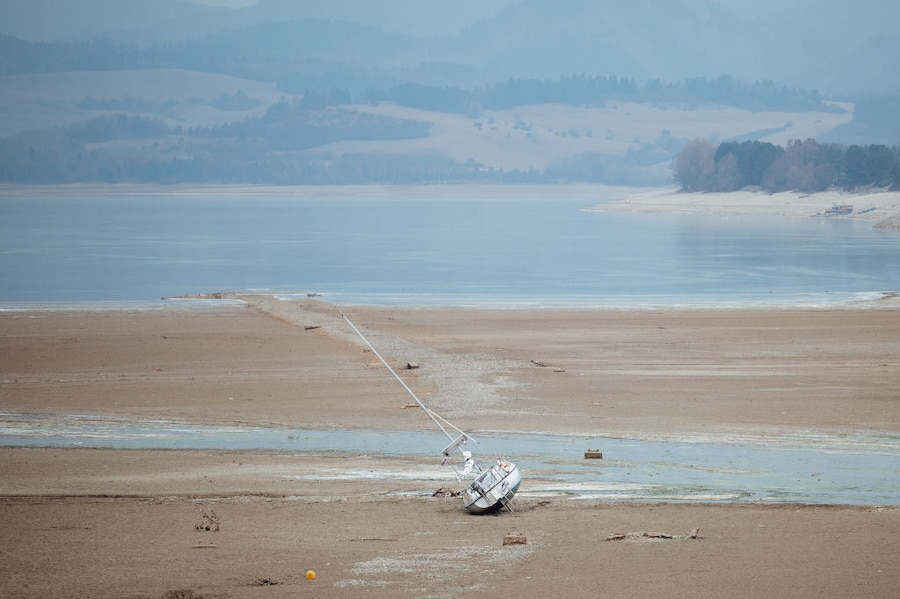This post was originally published on Eco Watch
Stronger water management efforts will be essential to overcoming the gap between supply and demand as the planet continues to warm, according to a new analysis by Lorenzo Rosa, principal investigator at Carnegie Science, and Matteo Sangiorgio, a researcher at the Polytechnic University of Milan.
For the study, the pair of researchers quantified issues of water scarcity under 1.5 and three degrees Celsius of global heating above pre-industrial levels, a press release from the Carnegie Institution of Science said.
“Water scarcity is one of the greatest challenges facing humanity this century,” Rosa said in the press release. “About 4 billion people reside and about half the world’s irrigated agriculture is in regions that experience water scarcity for at least one month each year.”
Life on Earth cannot exist without water. It is necessary for human health, food and energy security, environmental resilience, economic development and a wide range of human activities. Even though it is so important, in many places on our planet, demand for water exceeds available supply.
When water consumption is greater than the natural availability of water at any time during a month, it is referred to as a “water gap.” As time goes on, this kind of unsustainable use leads to depleted rivers, lakes, aquifers, groundwater and other natural water reserves.
“Water gaps are already an issue for communities around the world, resulting in either inadequate supplies of water or environmental degradation,” Rosa explained. “And as climate change further disrupts precipitation patterns and alters the water cycle, it will add even more stress.”
Earlier research approached the subject by quantifying groundwater depletion or other reductions in water availability globally, while other studies looked at unsustainable use of water at the regional level.
This study combined the two strategies in order to fully comprehend the scope of the problem and make well-informed water management policies and plans going forward.
“We must be able to balance environmental resilience and the growing need for water in a warming world with a burgeoning population,” Rosa emphasized. “As cities grow, pollution, industrial water use, and irrigation will all increase, which will, in turn, exacerbate the water gap.”
Sangiorgio and Rosa quantified water gaps for scenarios under baseline, 1.5 and 3 degrees Celsius of warming, accounting for factors such as surface and groundwater depletion and water requirements for aquatic ecosystems.
The findings showed that there are already almost 458 billion cubic meters in water gaps annually. They are predicted to grow by 6% under a 1.5 degrees Celsius warming scenario and by 15% if the planet warms by 3 degrees Celsius.
“Even relatively modest increases in the water gap can put pressure on ecosystems and lead to severe shortages for agricultural use, resulting in food insecurity,” Rosa said.
Options to consider for water resources managers and lawmakers in order to increase water supplies include enhancing water storage capabilities by investing in resilient infrastructure, reusing treated wastewater, desalinating saltwater and bringing in water from other areas.
Farmers can prepare for the potential of water scarcity by planting crops that are less water intensive while investing in irrigation technologies that are more efficient.
“While water scarcity can affect entire regions, the most severe consequences are borne by the most vulnerable and impoverished populations, underscoring the important influence of economic and institutional factors in determining water scarcity,” the authors wrote in the study. “Under global warming, this fragile balance between supply and demand is likely to worsen, leading to a future where water resources struggle to meet growing societal and environmental needs. Consequently, many areas face a widening water gap, which threatens not only economic development and societies but also the health of aquatic ecosystems.”
The study, “Global water gaps under future warming levels,” was published in the journal Nature Communications.
The post Gap Between Water Supply and Demand to Widen as Climate Warms: Study appeared first on EcoWatch.





0 Comments